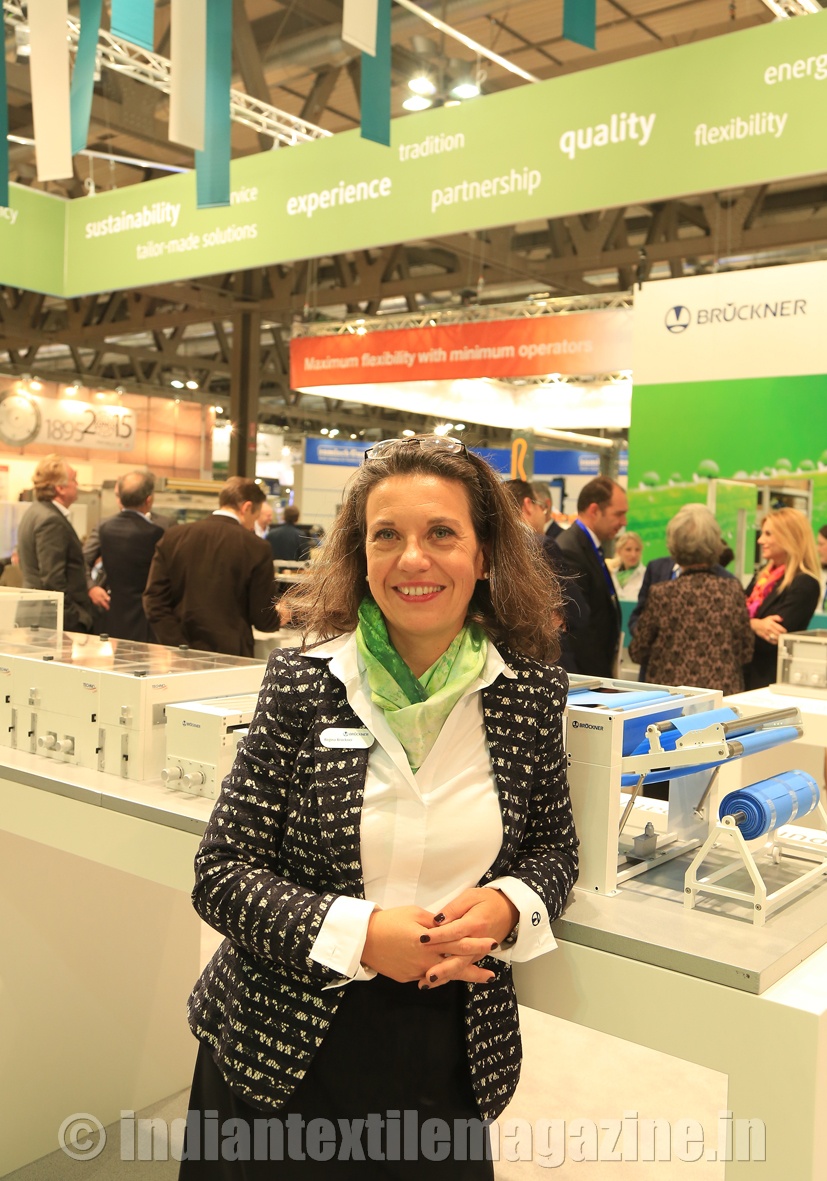On the occasion of its 125th anniversary, VDMA, the German Engineering Federation, has put together a series of multimedia reports. Published on the new website https://humans-machines-progress.com, the reports reveal that machines are not an end in itself for the machinery engineering industry.

Ms. Regina Brückner, Vice-Chairperson of the VDMA Textile Machinery Association, and Managing Associate of Brückner Trockentechnik, explains: “Machines are the means to make progress come true for people and to meet challenges like energy, mobility, infrastructure and health. Textiles and textile machinery play – sometimes hidden – a major role in improving daily life.”
Alost 125 years ago, in 1892, 29 machine factories in Cologne (Germany) laid the foundation for VDMA. The aim of the founding fathers was to establish a network of contacts for the mechanical engineering sector, which communicated common interests with one voice and in which the members agreed on specific positions on individual issues. These are still central tasks of VDMA and many services for the member-companies have been added.
Today, VDMA is the largest industrial association in Europe with around 3,200 member-companies, and in Germany alone machine construction is the largest industrial employer with one million employees. In other European countries and in the world, machine and plant engineering is also an important employer, an economic factor and a trading partner. Therefore, VDMA is represented abroad, for example in India, China and South America.
“Our members design and facilitate their daily lives with their products and services. They make progress possible. VDMA has been the joint representation of all these machine building companies for 125 years. We see this long tradition as an obligation to contribute our part to the path to the future. The new Internet portal is a successful example in which the various specialist branches of the association contribute jointly,” says VDMA Chief Executive Thilo Brodtmann.
Textile machinery is, for example, a starting point for resource-efficient construction. Lightweight construction materials based on knitted, woven or nonwovens fabrics enable enormous savings potential in aerospace. 1,974 litres of kerosene can be saved per aircraft per year with 20 kilograms less weight on the A320.
Infrastructure maintenance is currently time consuming and costly because the reinforced concrete that has been used in many structures, contains steel reinforcing bar that can corrode, making the concrete structure crack. Textiles offer a robust alternative by replacing steel with carbon. Carbon concrete is durable and versatile in its uses. The carbon used to reinforce concrete is even stronger than steel, but at the same time much lighter and more durable since it does not corrode. Building elements made of carbon concrete can thus be thinner, reducing demand for raw materials and, as a result, energy use and CO2 emissions are cut almost by half. These materials that help maintaining bridges and buildings are made on warp knitting machines, where yarn is processed into net-like cores or even three-dimensional spacer fabrics.
In medical technology, textiles play a vital part, too. The use of textile-based implants, such as stents, heart valve replacements and artificial cartilages or tissues, is growing strongly in modern surgical techniques. Garments with integrated sensors are already commercially available, including T-shirts that can measure pulse, breathing and body movement.
In the working world, textiles are both ubiquitous and practically invisible: Even in modern production sites, workers need professional and protective clothing to protect them from injury and safeguard against hazardous environments. Air conditioning is meanwhile becoming widespread in the modern working world – even in regions with no weather extremes. Air and dust filters made of nonwovens are most of the time not visible but they are there and help to protect staff, as well as sensitive equipment, in production plants.
The stories Materials and Health on humans-machines-progress.com show more exciting examples of mechanical and plant engineering being the driving force for lightweight construction and how medical textile technology ensures good health and quality of life.
New website
For the anniversary, the website www.mensch-maschine-fortschritt.de shows in German and English in the form of multimedia reports how important machine and plant engineering is for everyday life. Almost every product is produced by machines, from nano to giga, in all dimensions and application areas. Topics of the reports are for example: energy supply, infrastructure and mobility, food supply and human-robot collaboration.